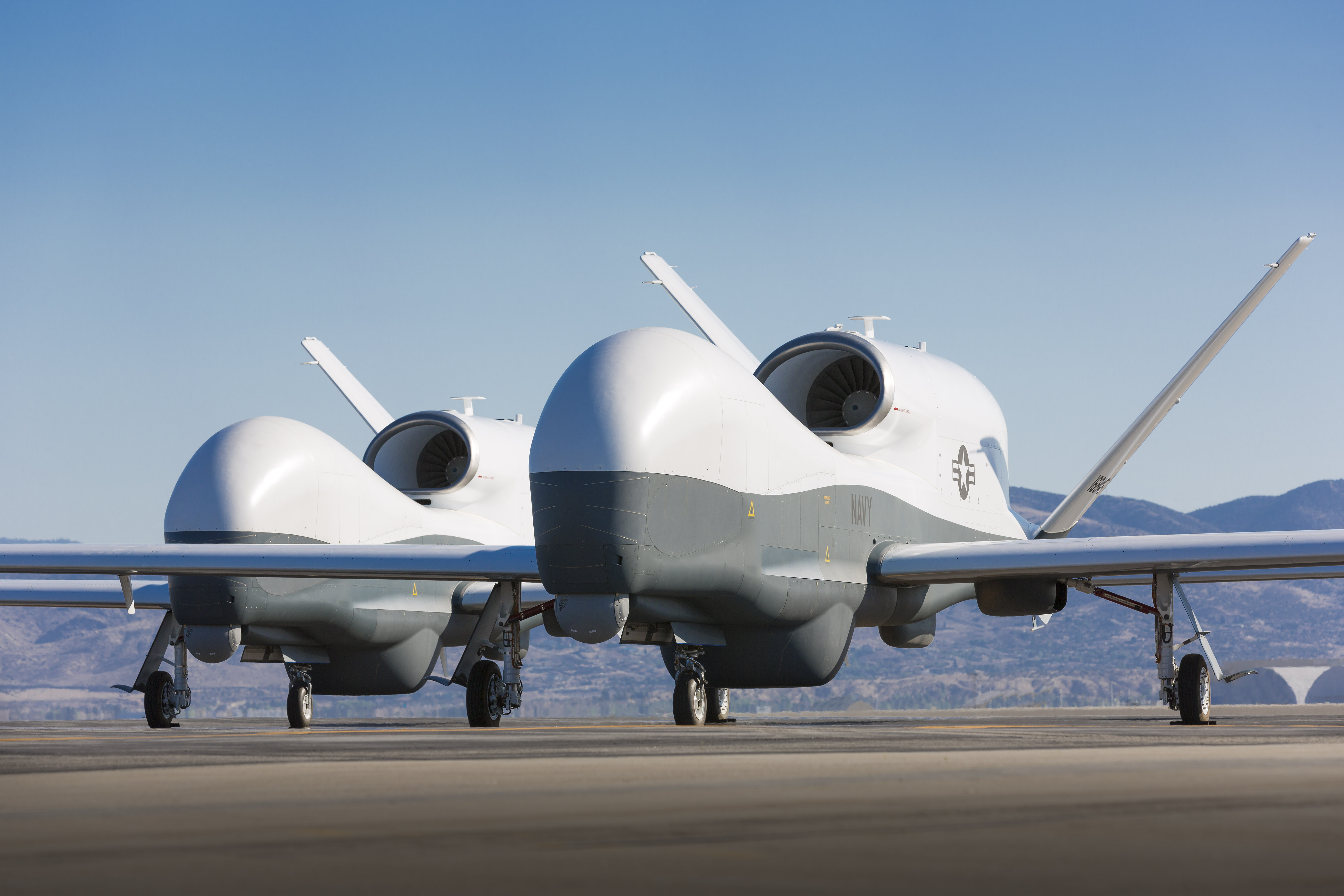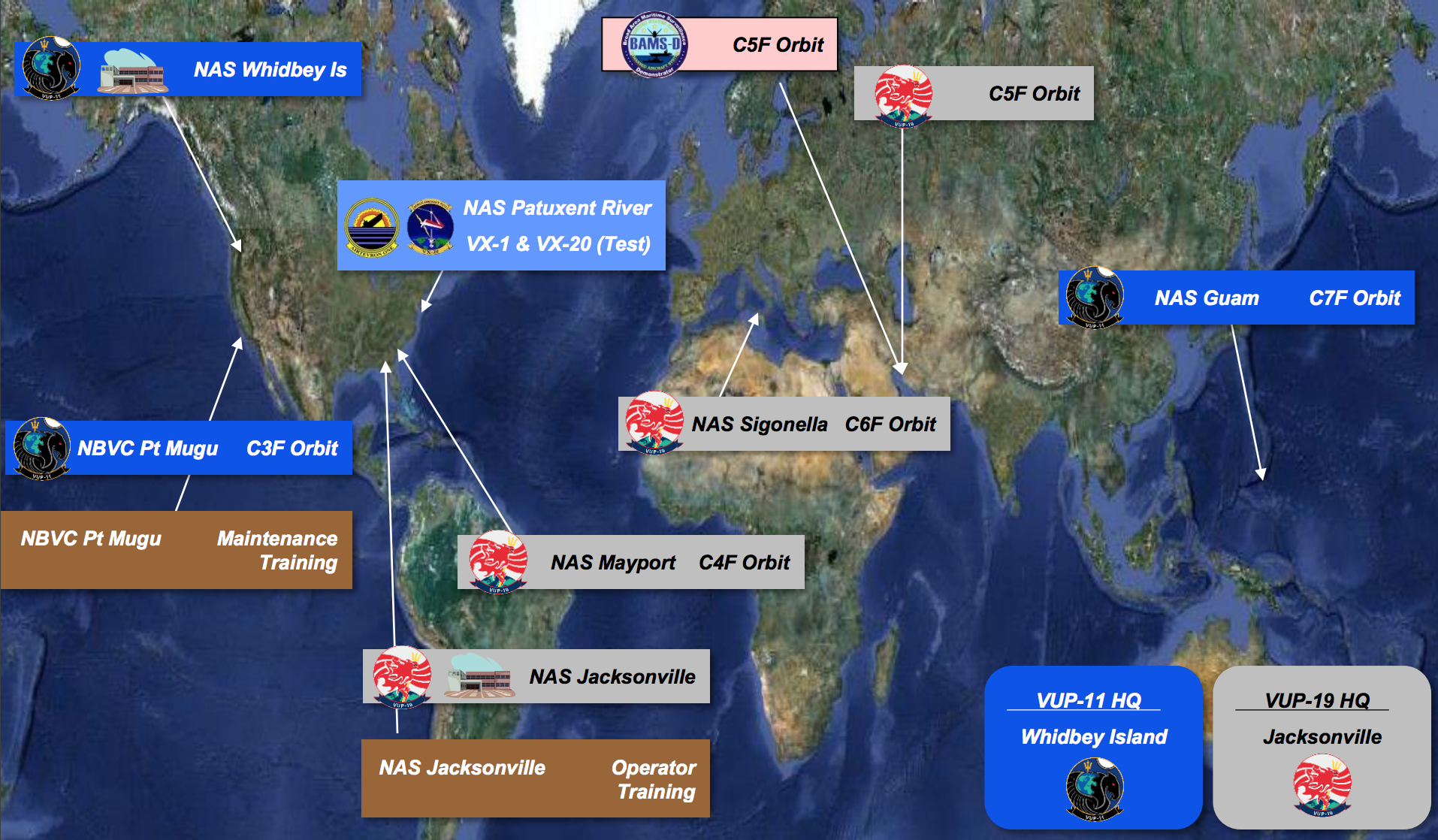
NATIONAL HARBOR, Md. — The Navy’s first two operational MQ-4C Triton high-altitude surveillance aircraft will start missions over the Pacific by the end of the year from a forward base in Guam, Naval Air Systems Command officials told reporters on Monday.
The pair of 131-ft wingspan UAVs built by Northrop Grumman for intelligence, surveillance and reconnaissance missions will deploy with an early set of capabilities designed for maritime ISR and will grow to include a signals intelligence function in 2021, Triton program manager Capt. Dan Mackin said in a briefing at the Navy League’s Sea Air Space 2018 exposition.
Triton will reach an initial operational capability in 2021, and the Navy will add two additional aircraft to the Guam orbit. Under the current concept of operations for the platform, four airframes will make up one 24-hour, seven-day orbit.
“One on the way out, one on station, one on the way back and one in maintenance,” Mackin said.
The first capability will combine a series of electro-optical sensors and radar to track maritime targets from as high as 60,000 feet over the ocean and compare tracks to automated identification systems on ships. A Triton will relay the information back to one of two main operating bases in the U.S. – Naval Station Mayport, Fla., and Naval Air Station Whidbey Island. Wash. – or to nearby P-8A Poseidon anti-submarine warfare aircraft.
“One of the main reasons that the Navy decided to fund Triton was to have that teaming arrangement, to be able to communicate back and forth between P-8s and the Triton aircraft. One of the primary missions of P-8 is to do the anti-submarine warfare and ISR, not necessarily things you want to do at the same time,” Mackin said.
“You want to give the P-8 the ability to perform the anti-submarine warfare mission while trying to high-altitude ISR mission. One of the things we’ll do is pass information back and forth between the two aircraft and the situational awareness of the fleet will be enhanced. Both aircraft have the ability to do chat, so both crews will be able to communicate back and forth.”

The Navy took delivery of the first operational Triton earlier this year, and that vehicle is currently being tested at Naval Air Station Point Mugu, Calif., ahead of the deployment to Guam, Mackin said.
Part of the IOC process will include adding a top secret “multi-intelligence” function to Triton that will eventually replace the Navy’s Lockheed Martin EP-3E Aries II manned signals intelligence platforms. Congress mandated the Navy retire the EP-3E Aries II only after it had found a way to field a similar capability.
Eventually, the Triton program will consist of five four-aircraft orbits around the world. The operators will reside in the two main bases at Mayport and Whidbey Island.
“The system is made up of an aircraft and a main operating base where the warfighter starts taking that data over wideband SATCOM link you start assimilating that data, put that data together to understand the [maritime picture],” Mackin said.
The Navy will have five operating bases where the aircraft will be maintained, launched and recovered. The forward bases will be at Naval Air Station Sigonella, Italy; an unspecified location in the Middle East; Naval Air Station Guam; Mayport; and Point Mugu.





